Search Images
Browse Content (p. 1399)
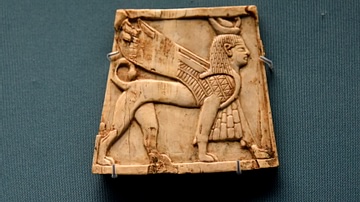
Image
Nimrud Ivory Panel of a Winged Sphinx
Never seen by the public before 2011. A small fragment of an ivory plaque from Nimrud. This winged-sphinx is Egyptian and wears the double crown of Egypt as well as a chest apron, the typical royal costume of Egyptian pharaohs. Phoenician...
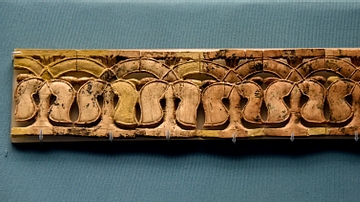
Image
Nimrud Ivory Panel of Stylized Palms
Never seen by the public before 2011. A small fragment of an ivory plaque from Nimrud. There are repeated motifs of small stylized palm trees, arranged horizontally. Neo-Assyrian Period, 9th to 8th centuries BCE. From Nimrud (ancient Kalhu...
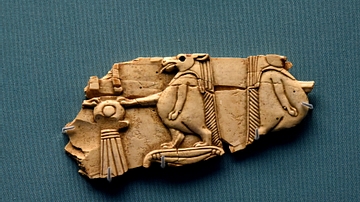
Image
Nimrud Ivory Panel of Tawaret
Never seen by the public before 2011. A small fragment of an ivory plaque from Nimrud. Two figures of the Egyptian goddess Tawaret (the demon-wife of Apep and the first god of evil) can be seen. Phoenician art. Neo-Assyrian Period, 9th to...
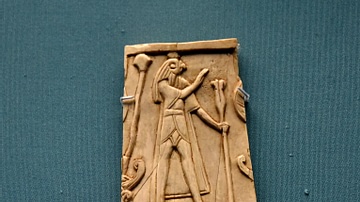
Image
Nimrud Ivory Panel of a Falcon-headed God
Never seen by the public before 2011. A small fragment of an ivory plaque from Nimrud. There is figure of a falcon-headed Egyptian god. He is standing in a gesture of adoration in front of a tree. Phoenician art. Neo-Assyrian Period, 9th...
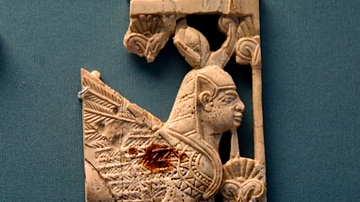
Image
Nimrud Ivory of a Winged Sphinx
Never seen by the public before 2011. A small fragment of an ivory plaque from Nimrud. A winged human-headed sphinx wears the double crown of Egypt. An apron hangs down on the chest with a projecting uraeus (rearing cobra) similar to those...
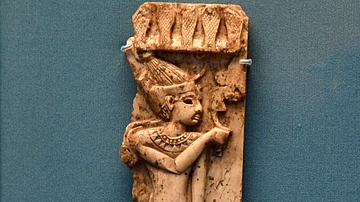
Image
Nimrud Ivory Panel of an Egyptian king
Never seen by the public before 2011. A small fragment of an ivory plaque from Nimrud. The depicted/carved man wears the double crown of Egypt and a royal costume. Phoenician art. Neo-Assyrian Period, 9th to 8th centuries BCE. From Nimrud...

Image
Model of Herod's Renovation of the Temple of Jerusalem
A model of the lavish renovation of the Temple of Jerusalem carried out by Herod the Great in the second half of the 1st century BCE. (Israel Museum, Jerusalem)
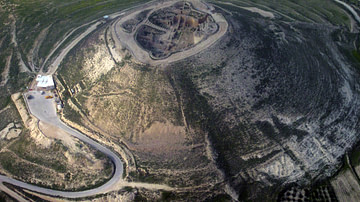
Image
Herodium
The Herodium, fortress and mausoleum of Herod the Great (reign c. 75 – 4 BCE). The fortress was built on the Jebel Fureidis mountain, 11 km south of Jerusalem, and completed c. 15 BCE. It included a palace structure within its walls and a...
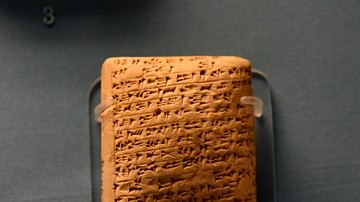
Image
Amarna Letter from Labayu
This clay tablet is part of the Amarna letters. This letter was sent from Labayu, ruler of Shechem to the Egyptian pharaoh Amenhotep III or Akhenaten. Labayu denies accusation of treachery and failure to comply with the pharaoh's orders...
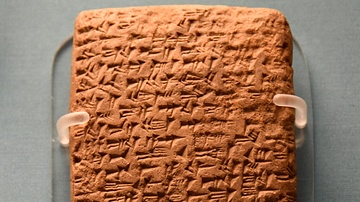
Image
Amarna Letter from Yapahu
This clay tablet is part of the Amarna letters. This letter was sent from Yapahu, (King of Gezer) to the Egyptian pharaoh Amenhotep III or Akhenaten. Yapahu begs the pharaoh for help in defending his city against rids by the Hapiru (Biblical...